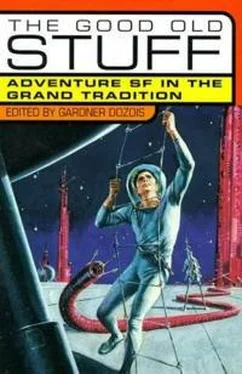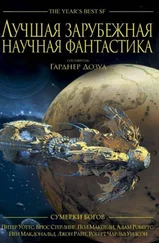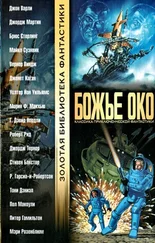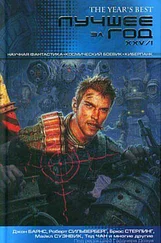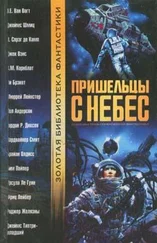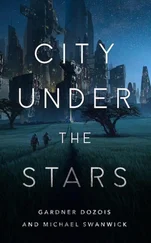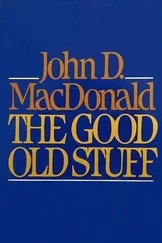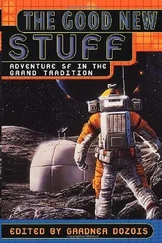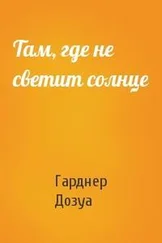Гарднер Дозуа - The Good Old Stuff
Здесь есть возможность читать онлайн «Гарднер Дозуа - The Good Old Stuff» весь текст электронной книги совершенно бесплатно (целиком полную версию без сокращений). В некоторых случаях можно слушать аудио, скачать через торрент в формате fb2 и присутствует краткое содержание. Год выпуска: 1998, ISBN: 1998, Издательство: St. Martin's Griffin, Жанр: Фантастика и фэнтези, на английском языке. Описание произведения, (предисловие) а так же отзывы посетителей доступны на портале библиотеки ЛибКат.
- Название:The Good Old Stuff
- Автор:
- Издательство:St. Martin's Griffin
- Жанр:
- Год:1998
- ISBN:0-312-19275-4
- Рейтинг книги:3 / 5. Голосов: 1
-
Избранное:Добавить в избранное
- Отзывы:
-
Ваша оценка:
- 60
- 1
- 2
- 3
- 4
- 5
The Good Old Stuff: краткое содержание, описание и аннотация
Предлагаем к чтению аннотацию, описание, краткое содержание или предисловие (зависит от того, что написал сам автор книги «The Good Old Stuff»). Если вы не нашли необходимую информацию о книге — напишите в комментариях, мы постараемся отыскать её.
The Good Old Stuff — читать онлайн бесплатно полную книгу (весь текст) целиком
Ниже представлен текст книги, разбитый по страницам. Система сохранения места последней прочитанной страницы, позволяет с удобством читать онлайн бесплатно книгу «The Good Old Stuff», без необходимости каждый раз заново искать на чём Вы остановились. Поставьте закладку, и сможете в любой момент перейти на страницу, на которой закончили чтение.
Интервал:
Закладка:
He looked down.
He looked down, as the god of our most ancient ancestors might have looked down. Fear, shame, and mocking laughter rang in my head. Her head, too?
“Now!”
She looked up at the nascent earthquake.
“I can’t!”
It was going to be so damnably simple this time, now the rabbit had died. I reached out.
I stopped.
“Push it yourself.”
“I can’t. You do it. Land him, Carl!”
“No. If I do, you’ll wonder for the rest of your life whether you could have. You’ll throw away your soul finding out. I know you will, because we’re alike, and I did it that way. Find out now!”
She stared.
I gripped her shoulders.
“Could be that’s me out there,” I offered. “I am a green sea serpent, a hateful, monstrous beast, and out to destroy you. I am answerable to no one.
Push the Inject.”
Her hand moved to the button, jerked back.
“Now!”
She pushed it.
I lowered her still form to the floor and finished things up with Ikky.
It was a good seven hours before I awakened to the steady, sea-chewing grind of Tensquare’s blades.
“You’re sick,” commented Mike.
“How’s Jean?”
“The same.”
“Where’s the beast?”
“Here.”
“Good.” I rolled over. “... Didn’t get away this time.”
So that’s the way it was. No one is born a baitman, I don’t think, but the rings of Saturn sing epithalamium the sea-beast’s dower.
Mother In The Sky With Diamonds
James Tiptree, Jr.
As most of you probably know by now, multiple Hugo—and Nebula—winning author James Tiptree, Jr.—at one time a figure reclusive and mysterious enough to be regarded as the B. Traven of science fiction—was actually the pseudonym of the late Dr. Alice Bradley Sheldon, a semi-retired experimental psychologist who also wrote occasionally under the name of Raccoona Sheldon. Dr. Sheldon’s tragic death in 1987 put an end to “both” authors’ careers, but, before that, she had won two Nebula and two Hugo Awards as Tiptree, won another Nebula Award as Raccoona Sheldon, and established herself, under whatever name, as one of the best writers in SF.
Although “Tiptree” published two reasonably well-received novels— Up the Walls of the World and Brightness Falls From the Sky —she was, like Damon Knight and Theodore Sturgeon (two writers she aesthetically resembled, and by whom she was strongly influenced) more comfortable with the short story, and more effective with it. She wrote some of the very best short stories of the ‘70s: “The Screwfly Solution,” “The Girl Who Was Plugged In,” “The Women Men Don’t See,” “Beam Us Home,” “And I Awoke and Found Me Here on the Cold Hill’s Side,” “I’m Too Big But I Love to Play,” “The Man Who Walked Home,” “Slow Music,” “Her Smoke Rose Up Forever.” Already it’s clear that these are stories that will last. They—and a dozen others almost as good—show that Alice Sheldon was simply one of the best short-story writers to work in the genre in our times. In fact, with her desire for a high bit-rate, her concern for societal goals, her passion for the novel and the unexpected, her taste for extrapolation, her experimenter’s interest in the reactions of people to supernormal stimuli and bizarre situations, her fondness for the apocalyptic, her love of color and sweep and dramatic action, and her preoccupation with the mutability of time and the vastness of space, Alice Sheldon was a natural SF writer. I doubt that she would have been able to realize her particular talents as fully in any other genre, and she didn’t even seem particularly interested in trying. At a time when many other SF writers would be just as happy—or happier—writing “mainstream” fiction, and chaffed at the artistic and financial restrictions of the genre, what she wanted to be was a science fiction writer; that was her dream, and her passion.
Sheldon clearly loved space adventure and Space Opera, even of the most basic, junk-food, lowest-common-denominator sort—the kind of stuff you can consume with guilty pleasure although you know it is Bad for you, and is probably clogging your arteries—and worked variations on slambang space adventure motifs into many of her stories and both of her novels, although often they were played in a discordant, somber—sometimes unrelievedly bleak—minor key, with lots of curious fluting and eccentric fingerings. (In the ‘80s, toward the end of her life, she would make a deliberately “retro” attempt to write Nostalgic Space Opera with tales like “The Only Neat Thing To Do” and “Collision,” later collected in The Starry Rift . Although they contain much excellent material, the tone of these stories is perhaps too self-conscious to match the power of her earlier, less mannered, more naive and genuine—if sometimes considerably rawer and clumsier—explorations of the form.)
Tiptree’s considerable impact on future generations of science fiction writers was especially pronounced on the cyberpunks—with stories like “The Girl Who Was Plugged In” directly ancestral to that form—but I think that she had a good deal of impact on the future evolution of the space adventure tale as well. For instance, although it’s not one of her better-known stories, rarely if ever remarked on by critics, I think that I can see the footprints of “Mother in the Sky with Diamonds” on a lot of subsequent work, from John Varley’s stuff a few years later, to Bruce Sterling’s early Shaper/Mechanist stories such as “Swarm,” and on to the Modern Baroque Space Opera of the ‘90s.
It’s an inelegant story in some ways, so jammed with new ideas and packed with plot that it’s almost claustrophobic, a sweaty, dense, exhausting read, brutally and ruthlessly paced, with no changes of mood or breathing spaces, that might have worked better as a novella (John W. Campbell reportedly referred to this story as a “condensed novel” in his rejection letter—and he was probably right about that, anyway).
But look at the thinking that’s going on in the background, as Sheldon reinvents the familiar Asteroid Belt civilization of past science fiction from top to bottom, replacing it with a bizarre and fascinating society of her own, featuring remote-controlled cyborg slaves, biologically-altered people adapted for living in space, spaceships made of monomolecular bubbles of “quasi-living cytoplasm,” degenerate drug-runners, and, most importantly, an entire psychological set radically different both from our own and from that of the Asteroid Belt-dwellers of earlier science fiction stories. You’re going to see these tropes show up again and again in the science fiction of the ‘80s and ‘90s, as will, increasingly, the idea that the people who live in the future will be different from you and me, with different perspectives, goals, and ethics, shaped by technology and the social changes driven by that technology, and by new environments. In a brutally compressed context of less than 10,000 words, this little story contains within it many of the seeds that will blossom and cross-fertilize and mutate into a rich crop of Story in the years to come ...
As James Tiptree, Jr Alice Sheldon also published nine short-story collections: Ten-Thousand Light Years from Home, Warm Worlds and Otherwise, Star Songs of an Old Primate, Out of the Everywhere, Tales of the Quintana Roo, Byte Beautiful, The Starry Rift , the posthumously published Crown of Stars , and the recent retrospective collection Her Smoke Rose Up Forever .
“Signal coming in now, ‘Spector.”
The Coronis operator showed the pink of her tongue to the ugly man waiting in the Belt patrolboat, half a mega-mile downstream. All that jky old hair, too, she thought. ISck. She pulled in her tongue and said sweetly, “It’s from—oh—Franchise Twelve.”
Читать дальшеИнтервал:
Закладка:
Похожие книги на «The Good Old Stuff»
Представляем Вашему вниманию похожие книги на «The Good Old Stuff» списком для выбора. Мы отобрали схожую по названию и смыслу литературу в надежде предоставить читателям больше вариантов отыскать новые, интересные, ещё непрочитанные произведения.
Обсуждение, отзывы о книге «The Good Old Stuff» и просто собственные мнения читателей. Оставьте ваши комментарии, напишите, что Вы думаете о произведении, его смысле или главных героях. Укажите что конкретно понравилось, а что нет, и почему Вы так считаете.
